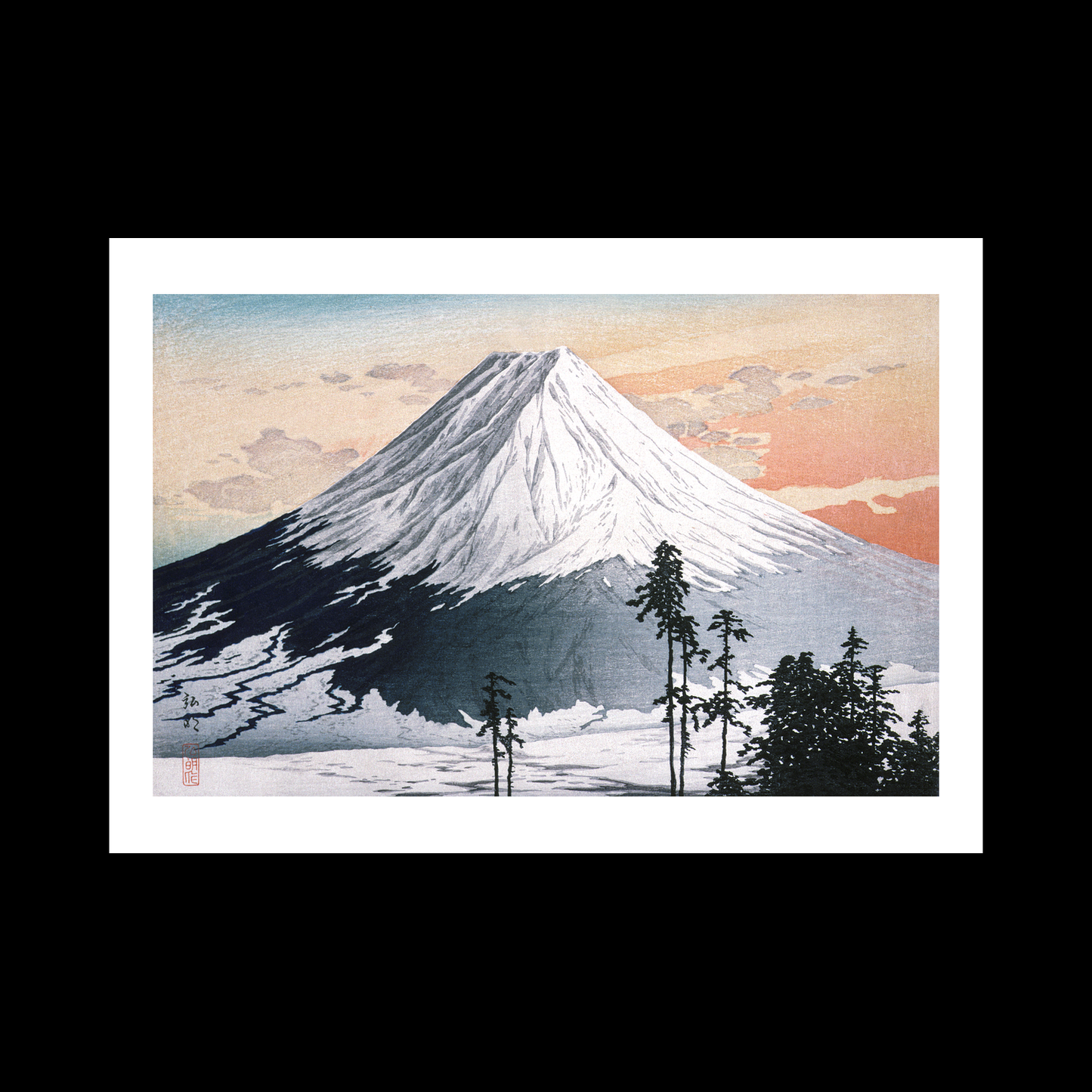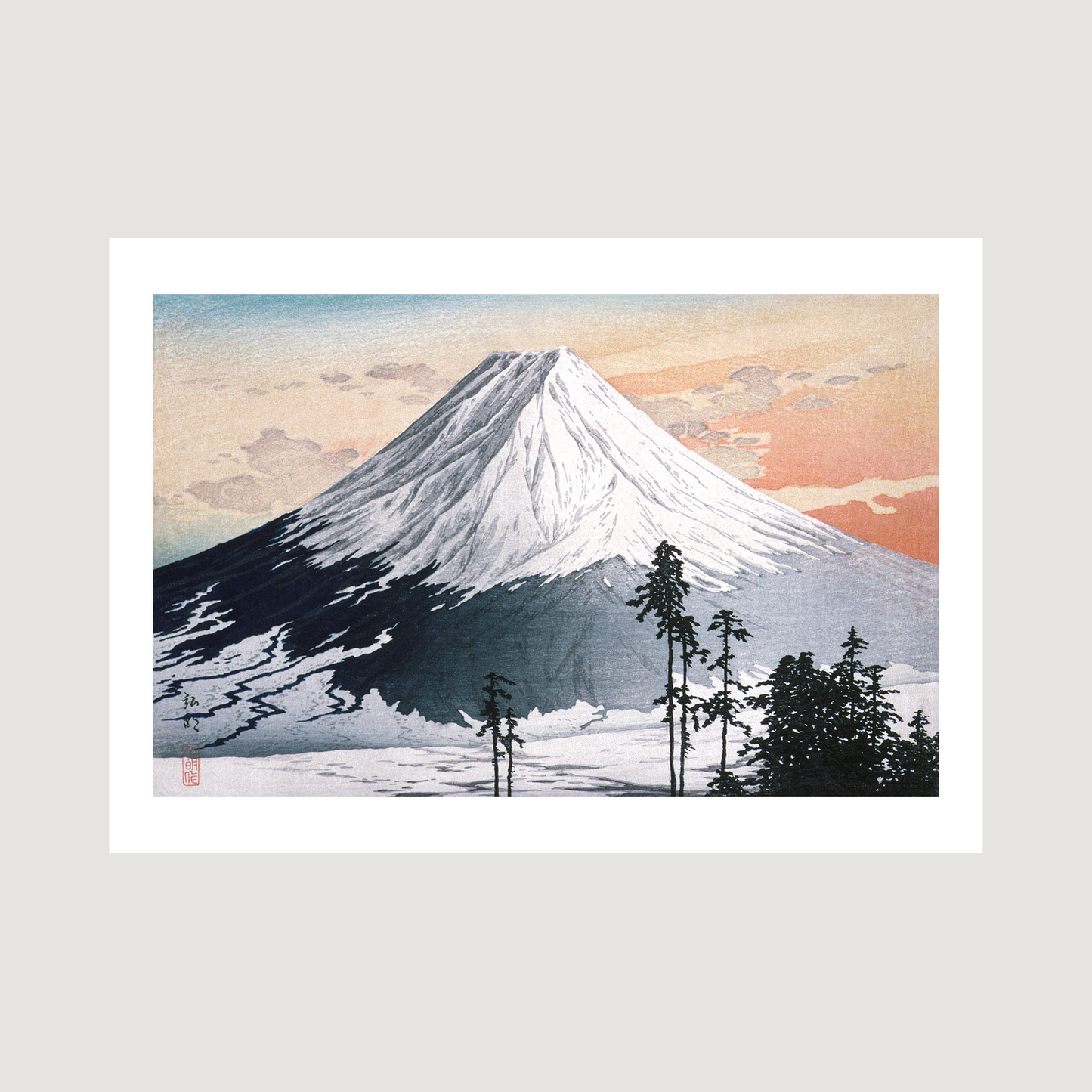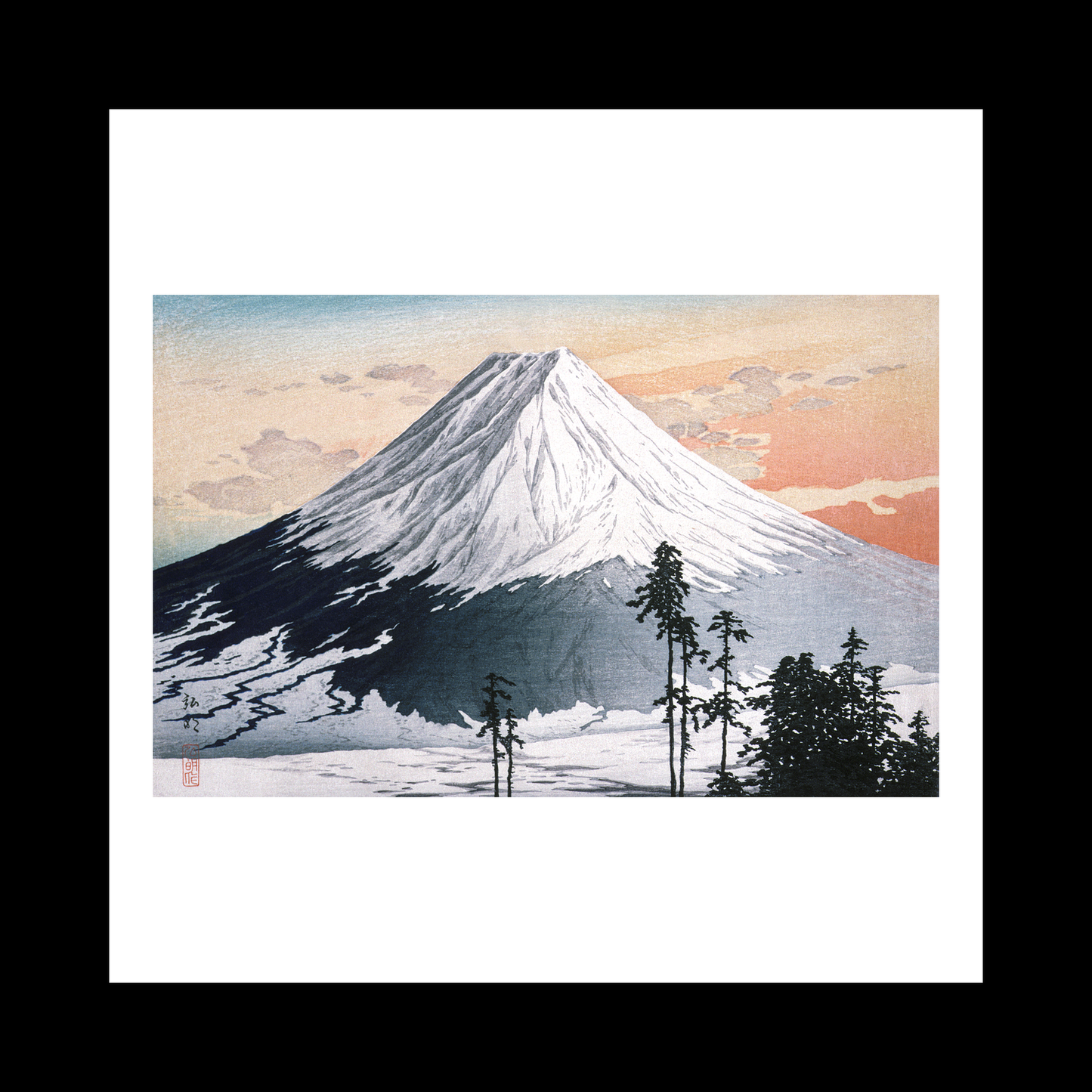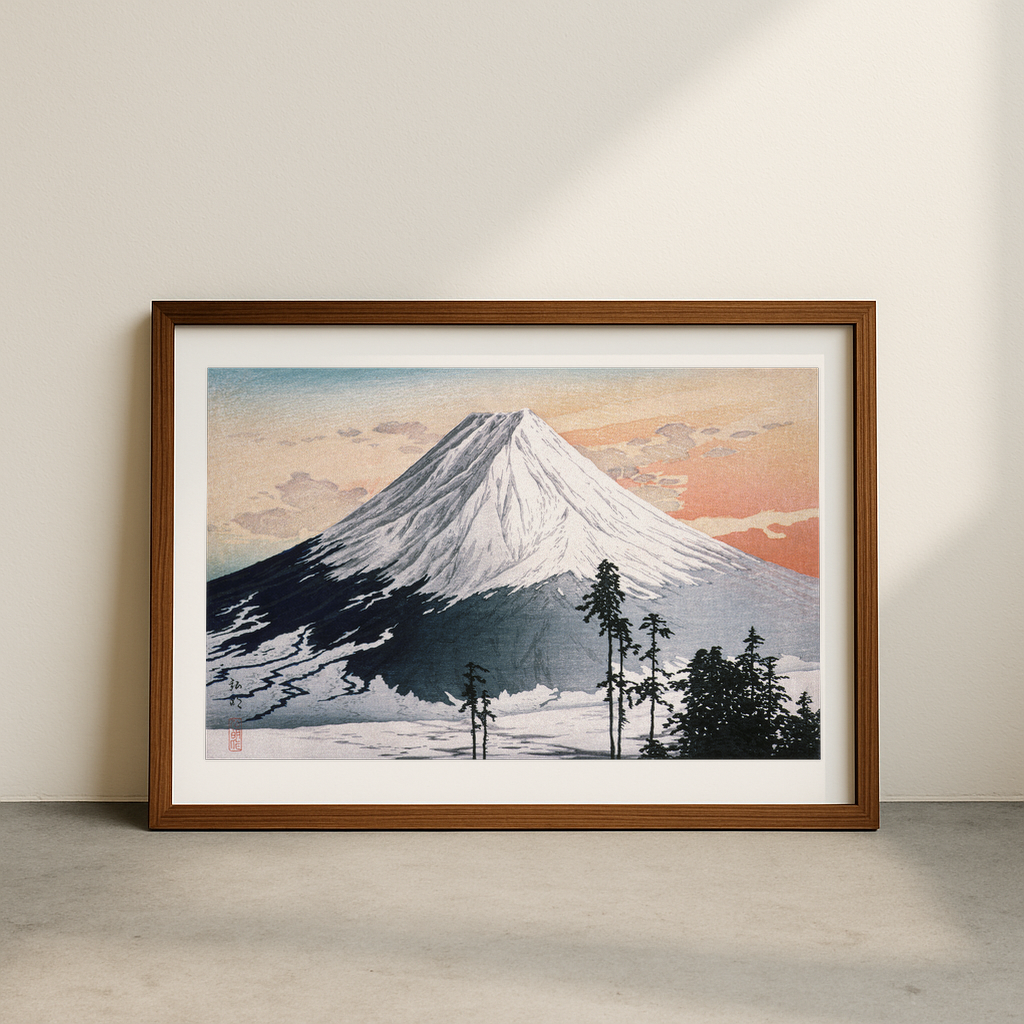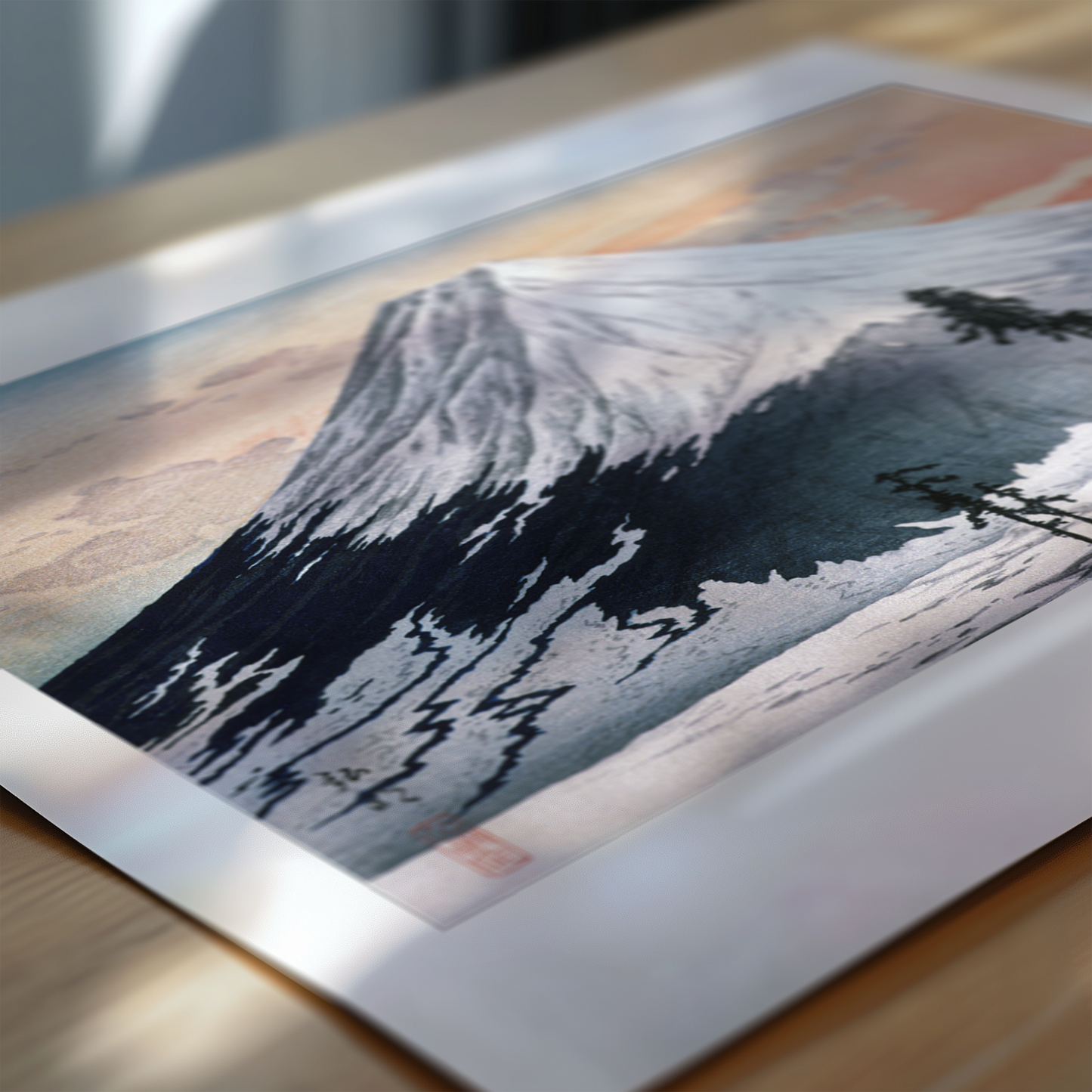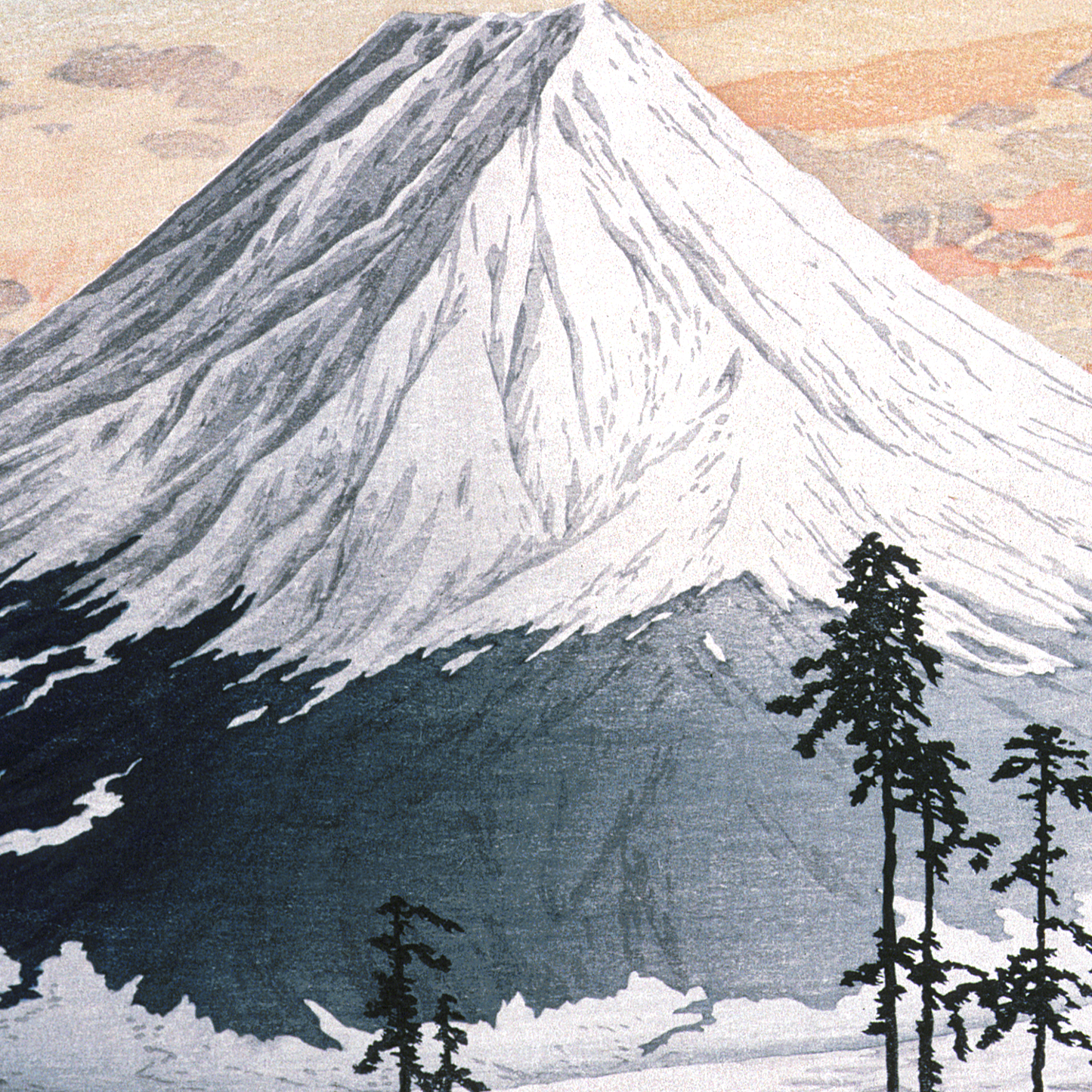1
/
of
6
Katsuyama Neighborhood
Katsuyama Neighborhood
Regular price
£12.45 GBP
Regular price
Sale price
£12.45 GBP
Taxes included.
Quantity
Couldn't load pickup availability
"Katsuyama Neighborhood" by Hiroaki Takahashi (Shōtei) captures a serene moment in early 20th-century Japan through the sophisticated technique of woodblock printing. The print showcases the artist's masterful use of colour gradation and perspective, depicting a peaceful urban landscape where traditional Japanese architecture harmoniously blends with the natural surroundings. The subtle interplay of light and shadow creates depth, while the careful attention to architectural details reveals the artist's keen eye for structural precision.
Takahashi, who worked during Japan's Shin-hanga movement (1915-1942), was known for bridging traditional ukiyo-e techniques with modern sensibilities. This particular piece, created between 1929 and 1932, reflects the period's fascinating transition between old and new Japan. The artist's choice to portray the Katsuyama neighbourhood speaks to the broader cultural preservation efforts during a time of rapid modernisation, offering viewers a glimpse into urban life during the late Taishō and early Shōwa periods.
The composition demonstrates Takahashi's remarkable ability to convey atmosphere through subtle colour choices and careful arrangement of elements. His use of traditional Japanese woodblock printing techniques, combined with Western-influenced perspective and shading, creates a unique visual narrative that resonates with both Japanese and international audiences. The piece exemplifies how Shin-hanga artists sought to preserve traditional subjects while embracing modern artistic innovations, making it particularly significant in the evolution of Japanese printmaking.
The print's peaceful ambiance and architectural accuracy make it not just an artistic achievement but also a valuable historical document, capturing the essence of a neighbourhood that may have changed dramatically in the decades since its creation. Takahashi's attention to atmospheric details - from the quality of light to the subtle environmental elements - creates an immersive experience that continues to captivate viewers nearly a century later.
View full details
Takahashi, who worked during Japan's Shin-hanga movement (1915-1942), was known for bridging traditional ukiyo-e techniques with modern sensibilities. This particular piece, created between 1929 and 1932, reflects the period's fascinating transition between old and new Japan. The artist's choice to portray the Katsuyama neighbourhood speaks to the broader cultural preservation efforts during a time of rapid modernisation, offering viewers a glimpse into urban life during the late Taishō and early Shōwa periods.
The composition demonstrates Takahashi's remarkable ability to convey atmosphere through subtle colour choices and careful arrangement of elements. His use of traditional Japanese woodblock printing techniques, combined with Western-influenced perspective and shading, creates a unique visual narrative that resonates with both Japanese and international audiences. The piece exemplifies how Shin-hanga artists sought to preserve traditional subjects while embracing modern artistic innovations, making it particularly significant in the evolution of Japanese printmaking.
The print's peaceful ambiance and architectural accuracy make it not just an artistic achievement but also a valuable historical document, capturing the essence of a neighbourhood that may have changed dramatically in the decades since its creation. Takahashi's attention to atmospheric details - from the quality of light to the subtle environmental elements - creates an immersive experience that continues to captivate viewers nearly a century later.
